Artist Frank Schroeder’s paintings create a dialogue between his art and his audience as he conveys universal human emotions and drama. Visit his website to see more.
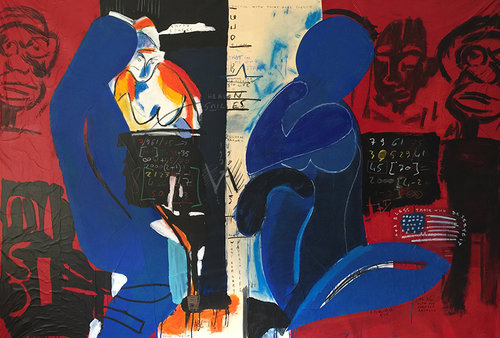
“2 + 1 + 2” (US Version) Acrylic and Mixed Media, 240cm x 150cm
My new series addresses universal and eternal themes rooted in a contentious dynamism between opposing – but intricately related – spiritual and emotional realms. Done in a scale typically reserved for historical painting, I draw distinct lines between ancient and classical narratives with the psychological zeitgeist of contemporary culture. These are often presented with excruciating poignancy in overtly, religiously-inspired tableaux composed of enigmatic archetypes that challenge the viewer into existential exploration.

“Under the Red Tree” Acrylic and Mixed Media, 190cm x 170cm
The elegantly rendered forms intermingle in veiled theatrical depictions of complicated and highly nuanced human dramas as ancient as time, but perhaps even more relevant in our hyper-stimulated world. These works spring from an affinity for experimental composition and aggressive collaging as mechanisms to underscore the jarring juxtaposition of perceptions in a time of polarized cultural ideals.
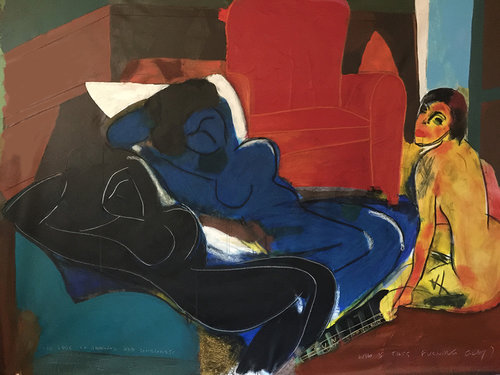
“The Remedy” Acrylic and Mixed Media, 170cm x 140cm
There is a real dialogue between my paintings and the viewer. My intention is that the audience becomes immediately engaged on both an aesthetic and conceptual level. The paintings probe individual and societal vanities, and lay bare enduring truths about humanity. A skilled conductor orchestrates a requirement that every spectator become an actor in his psycho-dramas.
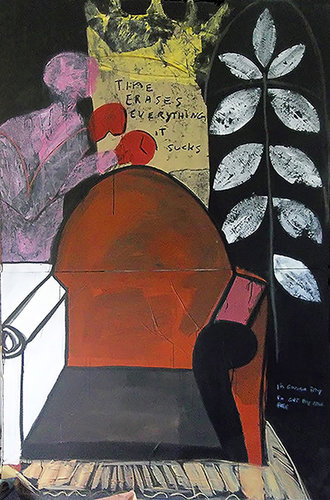
“Where is the King” (US Version) Acrylic and Mixed Media, 90cm x 180cm
I’m currently working in two different directions. First, I’m working and finalizing a very personal style in which I merge original painted paper collage (painted kraft paper mounted on canvas with only wet painting which dries and fixes on the support) and thick paint.
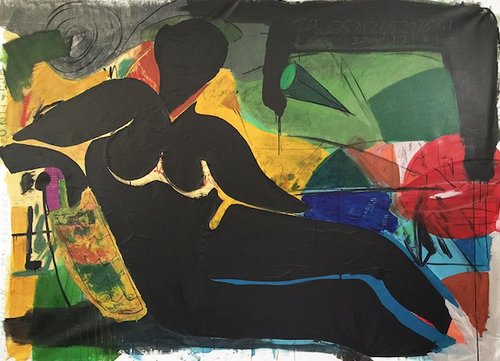
“Black Goddess” Acrylic and Mixed Media, 170cm x 140cm
Secondly, I’m working on developing ambitious, symbolic and fundamental themes which have built occidental civilization – for instance, religion, myths, philosophy and music.
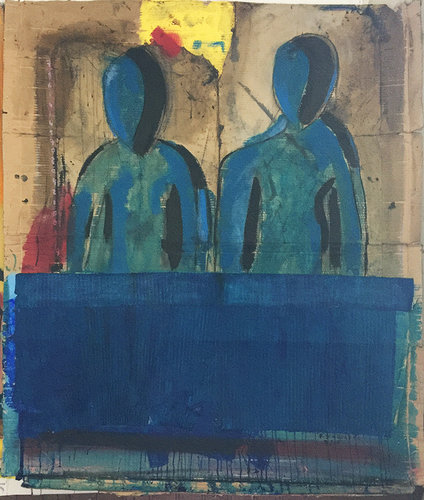
“Couple in Bed” (With No Sex) Acrylic and Mixed Media, 60cm x 80cm
For me, the intellectual reflection is as important as the act of painting which determines most of the finalized image; it determines if the painting is fair or flat or deep. It determines if the viewer will just quickly take a look and go walk away, or if he will stop in front of each painting and concentrate on getting inside the work and being full part of the story.
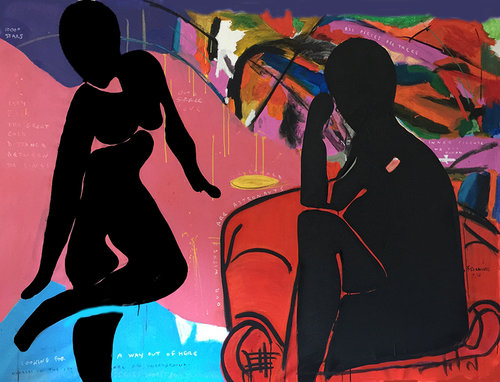
“Space Museum” Acrylic and Mixed Media, 170cm x 140cm
I want my viewers to experience the “Alice in Wonderland Syndrome.” I want the viewer to go through the proverbial mirror in order to get to the other side of my painting and live in my work as part of the story.
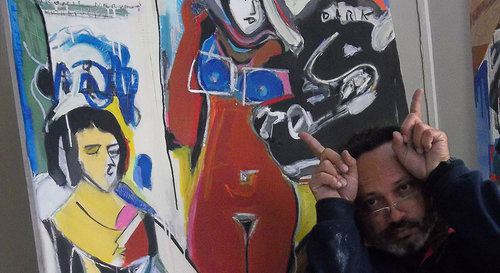
Artist Frank Schroeder in his studio.
I am inspired by mythology, universal themes, reflection about human nature, philosophy, poetry and the reflection about who we are and the why we do what we do. To discover what hurts us and what solaces us, relationships between people and to gain knowledge about human nature.


Speak Your Mind